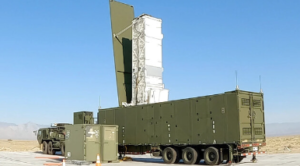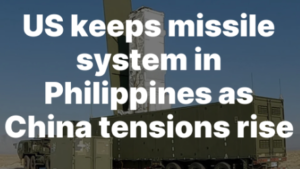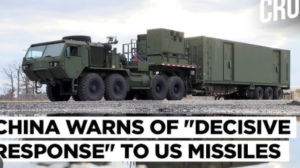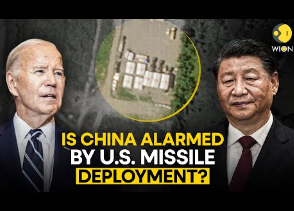Strategic Deployment
Originally brought in for joint military exercises earlier this year, the Typhon system has remained in the Philippines, signaling a significant strategic pivot in U.S. defense policy. Positioned on the northern island of Luzon, the system faces the South China Sea and is in close proximity to the Taiwan Strait—critical areas for U.S. military operations should a conflict arise with China.
Philippine officials report that training exercises with the missile system are ongoing, with no immediate plans for its return. Colonel Louie Dema-ala, a spokesman for the Philippine army, stated, “It is up to the higher headquarters to decide on its stay,” highlighting the cooperative nature of U.S.-Philippine military relations.
Regional Concerns and Reactions
China has condemned the deployment, claiming it threatens regional security and exacerbates geopolitical tensions. Chinese foreign ministry spokesperson Lin Jian expressed concern, stating, “It seriously threatens the security of regional countries and intensifies geopolitical confrontation.” Russia has also criticized the U.S. actions, citing the deployment as a catalyst for an arms race in the region.
The presence of the Typhon system underscores the escalating military posturing between the U.S. and China. Recent months have seen a series of confrontations in the South China Sea, where territorial disputes have led to increased naval and aerial tensions.
Testing Feasibility for Future Conflicts
A senior Philippine government official revealed that the U.S. and the Philippines are currently assessing the Typhon system’s effectiveness in potential conflict scenarios. “The Typhon is intended to be mobile and moved as needed,” the official noted, emphasizing its role in deterrence against Chinese aggression.
The U.S. military has categorized this deployment as a historic first, marking a significant step in strengthening the military partnership between the U.S. and the Philippines. With the Typhon capable of launching missiles like the SM-6 and Tomahawk—with ranges exceeding 1,600 km—its strategic value cannot be overstated.

Military Buildup in the Indo-Pacific
In response to China’s growing military capabilities, the U.S. is ramping up its defense assets in the Indo-Pacific. Reports indicate plans to acquire more than 800 SM-6 missiles over the next five years, alongside maintaining a robust inventory of Tomahawks.
China’s aggressive militarization of islands in the South China Sea, including the deployment of anti-ship and anti-aircraft missiles, has raised alarm bells in Washington. Despite Chinese claims that its military installations are defensive, the U.S. views these developments as a direct challenge to regional stability.
As the situation evolves, the U.S. remains committed to its defense alliance with the Philippines, viewing it as crucial for maintaining stability in the Indo-Pacific. Philippine Foreign Affairs Secretary Enrique Manalo has assured that the missile system poses no threat to China, aiming to mitigate tensions while emphasizing the strategic importance of U.S. military support.
As both nations navigate these complex geopolitical waters, the coming weeks will be pivotal in determining the trajectory of U.S.-China relations and regional security dynamics.
Background on the Typhon System
- Deployment Context: The Typhon system was initially deployed for joint military exercises, showcasing U.S.-Philippine military cooperation. Its continued presence signals a strategic pivot in response to rising tensions with China.
- Capabilities: The Typhon is equipped with advanced cruise missiles, such as the SM-6 and Tomahawk, which have ranges exceeding 1,600 kilometers. This makes it a potent deterrent against potential aggression, particularly from China.

U.S.-Philippines Defense Relations
- Historical Partnership: The U.S. has a long-standing defense treaty with the Philippines, which serves as a key ally in Southeast Asia. The retention of the Typhon system reinforces this alliance amid growing regional threats.
- Military Training: Ongoing training exercises are designed to integrate the Typhon system into Philippine defense strategies, enhancing the country’s military capabilities against external threats.
Regional Tensions
- China’s Response: China views the deployment as a direct threat, warning that it exacerbates geopolitical tensions in the region. Chinese officials have condemned U.S. military actions as provocative and destabilizing.
- South China Sea Disputes: The South China Sea remains a flashpoint for territorial disputes, with both U.S. and Chinese forces conducting military operations in the area, leading to confrontations at sea and in the air.
Strategic Implications
- Military Buildup: The U.S. is ramping up its military presence in the Indo-Pacific to counterbalance China’s growing military capabilities. This includes plans to acquire a significant number of missiles and enhance its overall defense posture in the region.
- Regional Stability: The deployment of the Typhon system is seen as a way to deter potential aggression from China, especially in light of China’s militarization of islands in the South China Sea.
Future Considerations
- Diplomatic Efforts: As tensions rise, U.S. officials are likely to continue seeking diplomatic solutions to avoid escalation while maintaining a strong military presence as a deterrent.
- Long-Term Strategy: The retention of the Typhon system reflects a long-term U.S. strategy to ensure stability in the Indo-Pacific, supporting allies like the Philippines while countering the influence of China.

